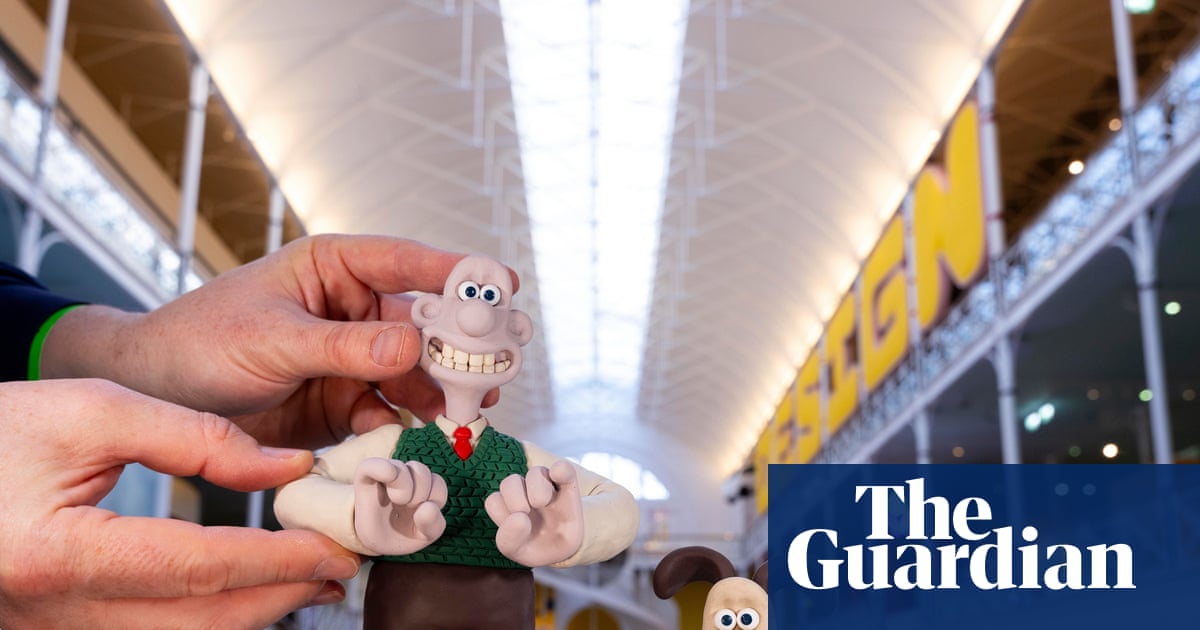Aardman studios is known around the world for its seamlessly animated stop-motion train chases, hacked “smart gnomes”, tea-consuming heroes and villainous penguins.
Now fans will get a behind-the-scenes look at the studio’s best-known projects and see how they went from rough ideas sketched out on a kitchen table to Oscar-winning films in a major exhibition at the Young V&A in east London.
The curators of Inside Aardman: Wallace & Gromit and Friends, which opens in February, are promising a unique chance to see the creative process of the studio that brought the world Morph, Shaun the Sheep and Norbot.
Alex Newson, the chief curator at the Young V&A, says he wants the exhibition to “demystify” the animation process and show a new generation of children how their favourite films are made.
He said: “There’s a phenomenal amount of skill and technique that goes into making animations in the way that Aardman do. But, on the other hand, it’s an incredibly accessible art form. And actually, anyone can make a stop-motion animation in their home with very minimal equipment.”
The exhibition will feature 150 items, including sets and storyboards such as the train chase scene from Wallace & Gromit: The Wrong Trousers.
He said: “I don’t think a stop-motion sequence quite like that had ever been filmed before. Just to see how they planned it out at the storyboard stage before they do any filming or modern making is really lovely.”
The Aardman exhibition at the Young V&A will include 150 items, including the submarine from Wallace & Gromit: Vengeance Most Fowl. Photograph: David Parry/V&A
There will also be the interior and exterior of the submarine used by Wallace and Gromit’s arch nemesis, Feathers McGraw, in Vengeance Most Fowl. The studio’s latest instalment in the Wallace & Gromit films series, it was a critical and ratings hit.
The Young V&A has been trying to secure an Aardman exhibition since before the Covid-19 pandemic. It considered trying to host the Art of Aardman, which toured in 2023, but the institution, which has had a major refurbishment and was named museum of the year in 2024, decided to work on something more suited to its younger audience.
The exhibition will be a key part of Aardman’s 50th anniversary celebrations, which will take place throughout 2026.
Peter Lord and David Sproxton founded the UK’s biggest animation production company while still at school, producing early projects on their kitchen tables. Aardman has gone on to become one of the most celebrated names in British film-making.
skip past newsletter promotion
Take a front seat at the cinema with our weekly email filled with all the latest news and all the movie action that matters
Privacy Notice: Newsletters may contain information about charities, online ads, and content funded by outside parties. If you do not have an account, we will create a guest account for you on theguardian.com to send you this newsletter. You can complete full registration at any time. For more information about how we use your data see our Privacy Policy. We use Google reCaptcha to protect our website and the Google Privacy Policy and Terms of Service apply.
after newsletter promotion
One of the pair’s first creations was Morph, a stop-motion creation who appeared on the popular children’s programme Take Hart. Aardman also created elements of Peter Gabriel’s Sledgehammer video and produced several adverts in the 1990s after the success of Creature Comforts, its first winner of an Academy Award.
In 1989, Nick Park directed A Grand Day Out, the film that brought the cheese-obsessed Lancastrian inventor Wallace and his faithful dog, Gromit, to a mainstream audience. The duo have since appeared in four short and two feature-length films, becoming the studio’s best-loved creations in the process. The animation studio has won four Oscars and has ventured into video games.
In an interview in 2009, Park said he believed Wallace and Gromit remained popular because they were distinctly British. “The fact they’re made from plasticine means their faces can convey emotions very subtly,” he said. “Gromit says a lot just by raising one sardonic eyebrow.”
In 2018, Lord and Sproxton handed over a 75% stake in the business to their 140 employees in order to “safeguard independence” for the studio. Employees hold their majority stake in the business through a trust, similar to the way the John Lewis partnership is organised.

